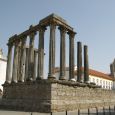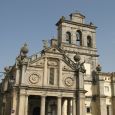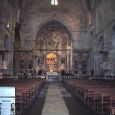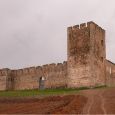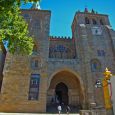Evora
Advertisement
By bus
from Lisbon the ticket is around 10 euros for students and around 12 euros without discount
By car
distance: 140 Km, from Lisbon take the A2 by either bridge, then A6, then N114 to Evora tolls
The Intercity train from Lisbon is not working at the moment
Roman Temple of Evora
The Roman Temple of Evora (also referred to as the Templo de Diana, after Diana, the ancient Roman goddess of the moon, the hunt, and chastity) is an ancient edifice in the city of Evora, Portugal. The temple is part of the historical centre of the city, classified as a World Heritage Site by UNESCO. It is one of the most famous landmarks of Evora and a symbol of Roman presence in Portuguese territory.
Cathedral of Evora
The Cathedral of Evora is one of the oldest and most important monuments in the city of Evora, in Portugal, lying on the highest spot of the city. It is part of the historical city centre.
It has been declared a World Heritage Site by UNESCO in 1988
Igreja de Sao Francisco
The Igreja de Sao Francisco is located in Evora, Portugal. It is best known for its lugubrious Chapel of the Bones.
This huge church was built in Gothic style (with some Manueline influences) between 1475 and the 1550s to the design of Martim Lourenço, replacing an earlier Romanesque church of 1226. This church is one of a kind through its narthex with arcades in front of the church. The arcade is formed by seven arches with different forms (semicircular, pointed or horseshoe arches), a typical blend of Gothic and Moorish elements.
Palace of the Counts of Basto
Primitive Moorish castle and residence of the kings of the Afonsine dynasty. Its outer architecture displays features of Gothic, Manueline, Mudejar and Renaissance styles.
Palace of Vasco da Gama
Vasco da Gama resided here in 1519 and 1524, the dates corresponding to his nomination as the Count of Vidigueira and Viceroy of India. The Manueline cloister and some of its Renaissance mural paintings are still preserved.
Ladies' Gallery of Manuel I's Palace
Ladies' Gallery of Manuel I's Palace Remnants of a palace built by King Manuel I in Gothic-Renaissance style. According to some chroniclers, it was in this palace, in 1497, that Vasco da Gama was given the command of the squadron he would lead on his maritime journey to India.
Information not available


